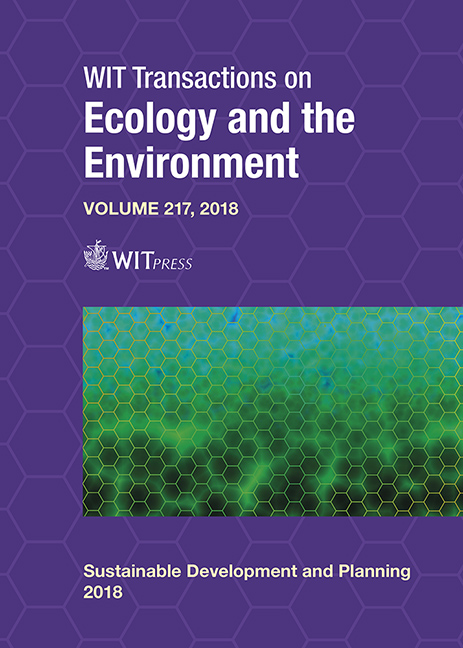PROSPECTIVE AND SUSTAINABILITY OF TWO NATURAL PROTECTED AREAS IN THE LEAST CROWDED STATE OF MEXICO: BAJA CALIFORNIA SOUTH
Price
Free (open access)
Transaction
Volume
217
Pages
9
Page Range
107 - 115
Published
2018
Size
843 kb
Paper DOI
10.2495/SDP180101
Copyright
WIT Press
Author(s)
OSCAR ARIZPE, JUDITH JUAREZ, PLACIDO CRUZ, ALBERTO TORRES
Abstract
Mexico is one of the countries with the highest levels of biodiversity in the world. Baja California South (BCS) is the Mexican state with the highest proportion of Natural Protected Areas (NPA) in its territory, the longest coastal line, and although has the lowest population density, has a highest annual population growth rate with a huge pressure from tourist development. NPA constitute fundamental instruments in the enforcement of environmental policies, essential to preserve biodiversity and are also an important engine for sustainable development. In this context the evolution of two coastal systems with almost the same age in BCS as a NPA, was analysed. The Pulmo Cape Coral Reef Area has been a rich source for many types of fishing-related activities for more than a century. Within the first three years of the study, a significant decline in the coverage of the coral reef and in the density of the fish and invertebrates was noticed, caused by the activities of the tourism and local population of the area. The NPA was officially declared in 1995, and, up to now, the sustainable development objectives were reached, improving the quality of life of the local people and the environmental health of the reef ecosystem. The San Jose Estuary coastal wetland, located less than 100km south to Pulmo Cape, was used for centuries by the local population and tourism. Their protection as an NPA was established in 1994. Results to date show a high environmental deterioration with increasing vulnerability in the last decade. The polygon of the NPA has changed 4 times in 20 years, their secular geomorphology has been reduced by more than 40% by the unplanned tourism development, initiating a big environmental deterioration that threatens the sustainable development of the contiguous population of San José del Cabo. The evaluation presents the description of these NPA, and elaborates on their importance, their major perceived challenges, and finally with an evaluation, are suggested the most favourable panoramas for the sustainable development.
Keywords
Pulmo Cape, estuary San Jose del Cabo, sustainable tourism, natural protected area management





